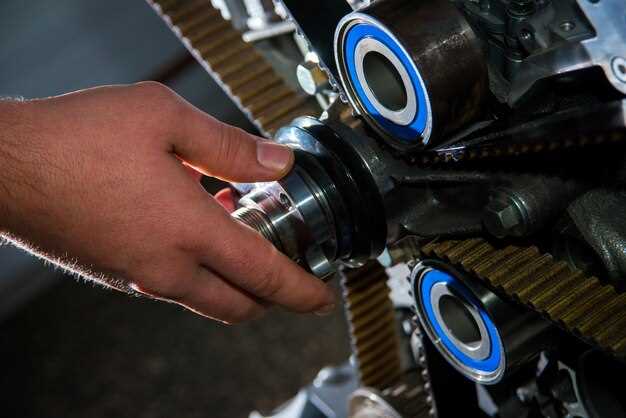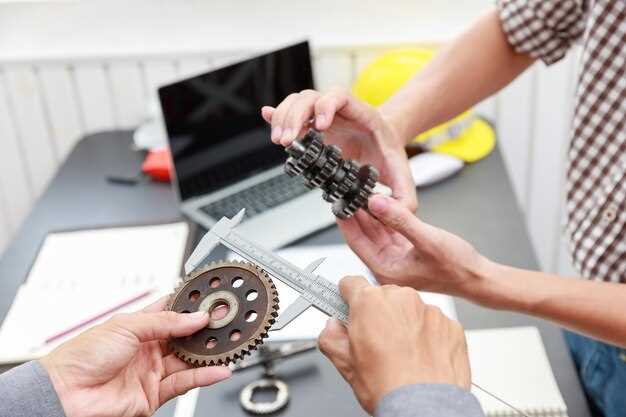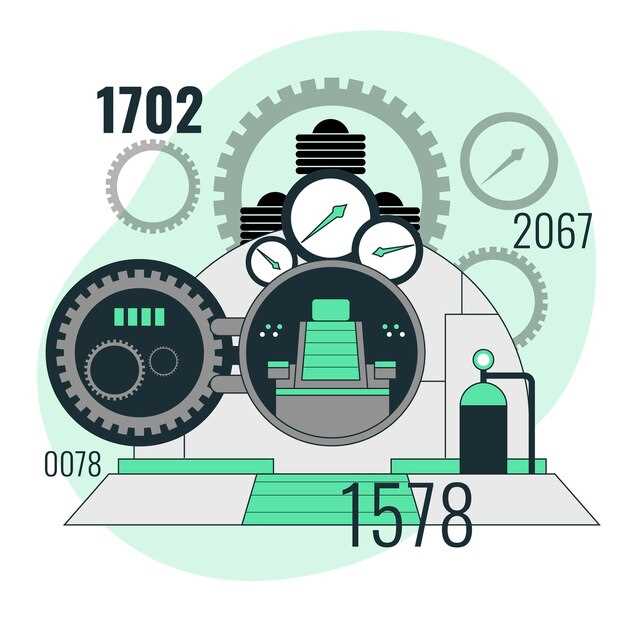
In the world of motorsports, the importance of an efficient transmission cannot be overstated. The type of transmission used can significantly impact a car’s performance on the track, influencing acceleration, handling, and overall driving experience. There are various types of racing transmissions, each with unique characteristics that cater to specific driving styles and racing conditions.
Understanding the benefits and drawbacks of different racing transmission types is crucial for both drivers and teams. Automatic, manual, and sequential transmissions all have their pros and cons. For instance, manual transmissions are often favored for their direct driver control and engagement, while automatic transmissions are appreciated for their ease of use and quicker shifts. On the other hand, sequential transmissions are designed for rapid gear changes, making them a popular choice in high-performance racing scenarios.
This article delves into the intricacies of racing transmission types, helping you navigate the complex landscape of options available to racers today. By examining each type’s performance characteristics, we aim to provide valuable insights that can guide your decision-making process, whether you are a seasoned racer or new to the thrilling world of competitive driving.
manual Transmissions: Pros and Cons for Racing
Manual transmissions are often favored in the racing world for their unique advantages. One significant benefit is the level of control they offer drivers. Racers can tailor gear changes to match engine power bands and track conditions, leading to optimized performance. This level of engagement allows for a more immersive driving experience, enabling skilled drivers to maximize acceleration and cornering speed.
Another advantage of manual transmissions is their typically lighter weight compared to automatic counterparts. This weight saving can translate into improved handling and quicker lap times, which are crucial in racing scenarios. Additionally, the simpler design of manual gearboxes means they are often more robust and can withstand the stresses of high-performance driving.
However, manual transmissions are not without their drawbacks. The primary disadvantage is the need for precise skill to operate effectively, which can be challenging, especially for novice drivers. In a high-pressure racing environment, the potential for missed shifts or errors can lead to significant time loss or even mechanical failures.
Moreover, in modern racing, the speed of gear shifts greatly influences a car’s performance. Manual transmissions typically cannot shift as quickly as advanced automatic systems with dual-clutch technology or other automatic options. This difference can be a critical disadvantage in competitions where every millisecond counts.
In summary, while manual transmissions offer superior driver control and weight advantages, they demand a high level of skill and may lag behind in shift speed when compared to automatic alternatives. Drivers must weigh these factors based on their racing style and competition type.
Automatic Transmissions: Performance Insights and Limitations
Automatic transmissions have become a popular choice for racing and high-performance vehicles due to their ease of use and advanced capabilities. However, understanding their performance insights and limitations is crucial for any racer or automotive enthusiast.
Performance Insights

- Quick Shifts: Modern automatic transmissions, especially dual-clutch systems, offer rapid gear changes, significantly reducing shift times compared to traditional manual transmissions.
- Efficient Power Management: Automatic systems can optimize the engine’s power output by selecting the most appropriate gear for various driving conditions, enhancing acceleration and overall performance.
- Adaptive Technology: Many modern automatics feature adaptive algorithms that learn driving styles and provide tailored performance, improving the driving experience in different scenarios.
- Launch Control: Automatic transmissions often include sophisticated launch control systems, which can provide better traction and faster starts during races.
Limitations

- Weight: Automatic transmissions typically weigh more than manual systems, which can negatively impact the overall performance of lightweight race vehicles.
- Power Loss: Automatic systems often have more parasitic losses, translating to lower efficiency in power delivery compared to manual transmissions.
- Less Driver Engagement: For enthusiasts, the lack of direct driver involvement in gear changes may detract from the overall driving experience.
- Cost: Automatic transmissions, especially high-performance variants, can be significantly more expensive to manufacture and maintain than their manual counterparts.
In conclusion, while automatic transmissions provide numerous benefits for performance racing, including rapid gear changes and efficient power management, their limitations in weight, efficiency, and engagement should be carefully considered based on individual racing needs and preferences.
CVT in Racing: Advantages and Discrepancies Explained
Continuously Variable Transmission (CVT) offers several advantages for racing applications, primarily due to its ability to provide seamless acceleration without the distinct shift points of traditional gearboxes. This results in improved performance by keeping the engine operating in its optimal power band, allowing for more efficient power delivery to the wheels.
One of the key benefits of CVT in racing is its adaptability. Unlike conventional transmissions that have fixed gear ratios, CVTs can continuously adjust to changing speed and load conditions. This flexibility can enhance acceleration and top speed, especially on tracks with varied terrain and conditions, making CVT a valuable option in certain racing formats.
Moreover, CVTs can reduce weight by eliminating complex mechanical linkages associated with multiple gears. This reduction in weight contributes to overall vehicle performance, as lighter cars can achieve faster lap times and improved handling, which is critical in competitive racing scenarios.
However, there are discrepancies associated with CVTs in racing. One major drawback is the potential lack of driver engagement. Traditional transmissions provide tactile feedback and a sense of control, which some drivers prefer for the sake of connection to the vehicle. The smooth operation of a CVT can sometimes feel less engaging, potentially affecting driver confidence and performance.
Additionally, CVTs can struggle with handling extreme power outputs commonly found in high-performance racing engines. The continuous nature of the transmission can lead to overheating issues under sustained high loads, making durability a concern for long races or in high-stakes competition.
In conclusion, while CVT technology has its advantages in terms of adaptability and performance efficiency, its drawbacks in driver engagement and durability under extreme conditions must be carefully considered when evaluating its use in racing environments. Choosing the right transmission type ultimately depends on the specific requirements of the racing event and the preferences of the driver.
Dual-Clutch Transmissions: Speed Benefits and Mechanical Challenges
Dual-clutch transmissions (DCT) have become increasingly popular in high-performance vehicles due to their unique design that offers significant speed advantages. This type of transmission utilizes two separate clutches for odd and even gears, allowing for faster gear shifts and improved acceleration. Below are the primary benefits and challenges associated with DCTs.
Speed Benefits
- Rapid Gear Changes: DCTs can shift gears in milliseconds, providing quicker acceleration and enhancing overall vehicle performance.
- Reduced Power Loss: By pre-selecting the next gear, these transmissions minimize the time power is disconnected from the wheels during shifts, maintaining momentum.
- Improved Fuel Efficiency: With optimized gear selection, DCTs can significantly improve fuel economy compared to traditional automatic transmissions.
- Enhanced Driving Experience: The seamless shifting experience contributes to a sportier feel, appealing to driving enthusiasts who prioritize performance.
Mechanical Challenges
- Complex Design: The dual-clutch system involves intricate engineering, which can make maintenance and repairs more complicated and costly.
- Heat Management Issues: DCTs generate more heat during operation, requiring advanced cooling solutions to prevent overheating and ensure longevity.
- Potential for Hardware Failure: The reliance on two clutches means that failure of one component can lead to transmission issues, necessitating thorough inspections and diagnostics.
- Learning Curve for Drivers: The unique driving characteristics of DCTs may not suit all drivers, leading to a possible adjustment period when transitioning from traditional automatic or manual transmissions.
In conclusion, while dual-clutch transmissions offer remarkable speed and efficiency benefits, their mechanical complexities and potential challenges cannot be overlooked. Understanding these factors is crucial for those considering DCTs as part of their performance vehicle choice.
Sequential Gearboxes: Precise Shifting and Potential Drawbacks
Sequential gearboxes have gained popularity in the world of racing due to their ability to provide precise and rapid gear changes. These systems allow drivers to shift gears in a linear pattern, typically by pulling back on a lever to upshift and pushing forward to downshift. This method of shifting enhances performance by minimizing the time lost during gear changes, which is critical in competitive racing scenarios.
One of the primary benefits of a sequential gearbox is its consistency in shifting. Unlike traditional H-pattern gearboxes, which can lead to potential human error during rapid shifts, sequential systems eliminate the guesswork. This predictability translates to better control over the vehicle, allowing drivers to focus more on their racing strategy rather than on the mechanics of gear changes.
Moreover, sequential gearboxes often incorporate features such as short-throw shifters, which further reduce the time taken between gears. This efficiency provides a competitive edge, particularly in high-speed racing environments where every millisecond counts. The rugged design of sequential gearboxes also tends to withstand the rigorous demands of racing, making them a reliable choice for high-performance vehicles.
However, despite their advantages, sequential gearboxes do come with potential drawbacks. One significant concern is the learning curve associated with their operation. Drivers accustomed to traditional gearboxes may find it challenging to adapt, as the shifting technique requires a different approach and precision. Additionally, the mechanical design can be more complex, leading to higher maintenance costs and potential reliability issues if not serviced regularly.
In conclusion, while sequential gearboxes offer unparalleled performance and precise shifting capabilities for racing applications, they also present challenges that must be considered. Understanding both the benefits and drawbacks allows teams and drivers to make informed decisions about their gearbox choices in pursuit of racing excellence.
Choosing the Right Transmission for Your Racing Style
Selecting the appropriate transmission for your racing style is essential to optimize performance, handling, and overall driving experience. The choice between different types of racing transmissions affects acceleration, shifting speed, and driver control. Understanding your racing discipline and personal preferences will guide you in making an informed decision.
Racing transmissions can typically be categorized into two main types: manual and automatic. Each type has its unique benefits and drawbacks that cater to different racing styles. Below is a comparison to help you choose the right transmission:
| Transmission Type | Benefits | Drawbacks |
|---|---|---|
| Manual Transmission |
|
|
| Automatic Transmission |
|
|
Your personal racing style plays a significant role in determining the ideal transmission. For track racing or environments requiring rapid gear changes, a manual transmission might offer the control needed for optimal lap times. Conversely, if you participate in drag racing, an automatic with a high-performance torque converter may provide the edge in consistent launches and shifts.
Ultimately, consider your specific racing environment, your skill set, and how much control you want during races. By analyzing these factors and matching them with the characteristics of available transmissions, you can effectively choose the right transmission for your racing style.






